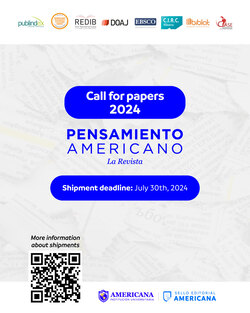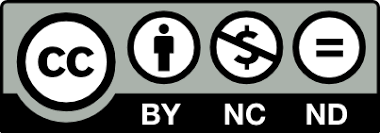The integration processes in South America: a view from its founding objectives
Keywords:
Neoconstitutionalism, integration, legal institutionsAbstract
In this paper we will address the issue of the integration processes in South America from the point of view of their formation and integration objectives to show whether there has been the influence of neoconstitutionalism, paradigm present in the constitutions of Latin America, in each processes to study. We will take as its starting point the analysis of what is known as integration and will approach the study of the main processes in South America given their training, legal and institutional life to finally address the objectives outlined in each agency and whether they respond or not to expectations of the fundamental rights of first, second and third generation.
Downloads
References
Altann, Josette (2008). ALBA: ¿Un Proyecto Alternativo para América Latina? Real Instituto Elcano. Área: América Latina - ARI Nº 17/2008.
Banochok, Luis Alberto (2005). Alternativa bolivariana para las Américas y el Caribe A.L.B.A. Argentina: El Cid Editor. p 13.
Bernal pulido, Carlos. El Neoconstitucionalismo y la Normatividad del Derecho. Universidad Externado de Colombia. Bogotá – 2009.
Cardona, Diego (2008). El ABC de UNASUR Doce Preguntas y Respuestas. Revista de la Integración. Secretaría General de la Comunidad Andina. Julio 2008 No2. ISSN1999-236X
Cardoso, Fernando Enrique (2000). “Cúpula Sul-Americana: Uma Avaliação” in Correiro Brasiliense 7.
Centro Interuniversitario de Desarrollo, Cinda Instituto de Altos Estudios de América Latina de la Universidad Simón Bolívar, Manual de Integración Latinoamericana. IAEAL. CINDA, 1987. Pág. 95-96.
Cepal (1994). El regionalismo abierto en América Latina y el Caribe. La integración económica al servicio de la transformación productiva con equidad. Naciones Unidas (L/G1801 SES. 25/4). Santiago de Chile.
Declaración de Cochabamba (2006). II Cumbre de la Comunidad Suramericana de Naciones. Comunidad Andina – Documentos Internacionales.
Declaración del Consenso de Guayaquil (2002). Revista Unidad Regional – Imágenes de Nuestra América No. 12. Septiembre – diciembre de 2002. Ciudad de México.
Declaración del Cuzco sobre la Comunidad Sudamericana de Naciones (2008). III Cumbre Presidencial de Sudamérica. Comunidad Andina – Documentos. Cusco.
Documento final de la Comisión Estratégica de Reflexión (2006). Un Nuevo Modelo de Integración de América del Sur hacia la Unión Sudamericana de Naciones. Comunidad Andina – Documentos Internacionales.
Guerra Vilaboy, Sergio y Maldonado Gallardo, Alejo (2000). Raíces Históricas de la integración Latinoamericana. Morelia: Universidad Michoacana de San Nicolás de Hidalgo. Pág. 81.
Habermas, Jürgen (1998). Facticidad y Validez. Editorial Trotta. Madrid.
Lleras Restrepo, Carlos (Presidente de Colombia) Discurso Inaugural del Pacto Andino. Cartagena 26 de enero de 1969.
Martínez Dalmau, Rubén (2007). La integración en el nuevo constitucionalismo latinoamericano. Universidad Externado de Colombia. Cátedra Jean Monet. Pág. 74.
Quenan, Carlos (2006). ¿Qué pasa con la integración económica andina? Venezuela: Red Revista Geoenseñanza, p 7. http://site.ebrary.com/lib/unortesp
Sánchez Daza, Germán (2006). La nueva integración económica de América Latina y el Caribe: balance y perspectivas en el cambio de siglo. México: Red Aportes.
Schott, Jeffrey (2005). The free trade area of Americas: Current Status and Prospects. Jean Monnet/Robert Schuman Paper Series Vol.5 No. 15. www6.miami.edu/eucenter.
Tomasino, Luciano (1981). La Integración y el Cambio de las estrategias de desarrollo de los países latinoamericano. Ediciones Cinde. Santiago de Chile. Pág. 66.
Vaillant, Marcel (2007). Convergencias y divergencias de la integración Sudamericana. División Comercio Internacional e Integración. Serie comercio internacional No. 83. Cepal. Santiago de Chile.
Fuentes consultadas por internet
www.aladi.org/presentación
www.alternativabolivariana.org/queeselalba
Downloads
Published
Issue
Section
License
Copyright (c) 2012 Pensamiento Americano

This work is licensed under a Creative Commons Attribution-NonCommercial-NoDerivatives 4.0 International License.
The author or authors of an article accepted for publication in the Journal Pensamiento Americano will transfer all of the patrimonial rights to the American University Corporation free of charge, within which are included: the right to edit, publish, reproduce and distribute both print media as digital, in addition to include in article in international indexes and / or databases, likewise, the Editorial Seal is authorized to use the images, tables and / or any graphic material presented in the article for the design of covers or posters from the same magazine. By assuming the patrimonial rights of the article, it may not be partially or totally reproduced in any printed or digital media without its express permission.
AUTHORITY ASPECTS
For the Pensamiento Americano Journal, all the authors of an article have made substantial contributions to the research and the manuscript, and they share the responsibility when the article presents errors, fraud in some way or violations of copyright.
After submitting an article, the journal does not accept the addition, deletion or change in the order of the authors, in addition we reserve the right to release the article when it has been submitted to the journal and under no circumstances will American Thought accept the article. withdrawal of an article during any phase of the editorial process






